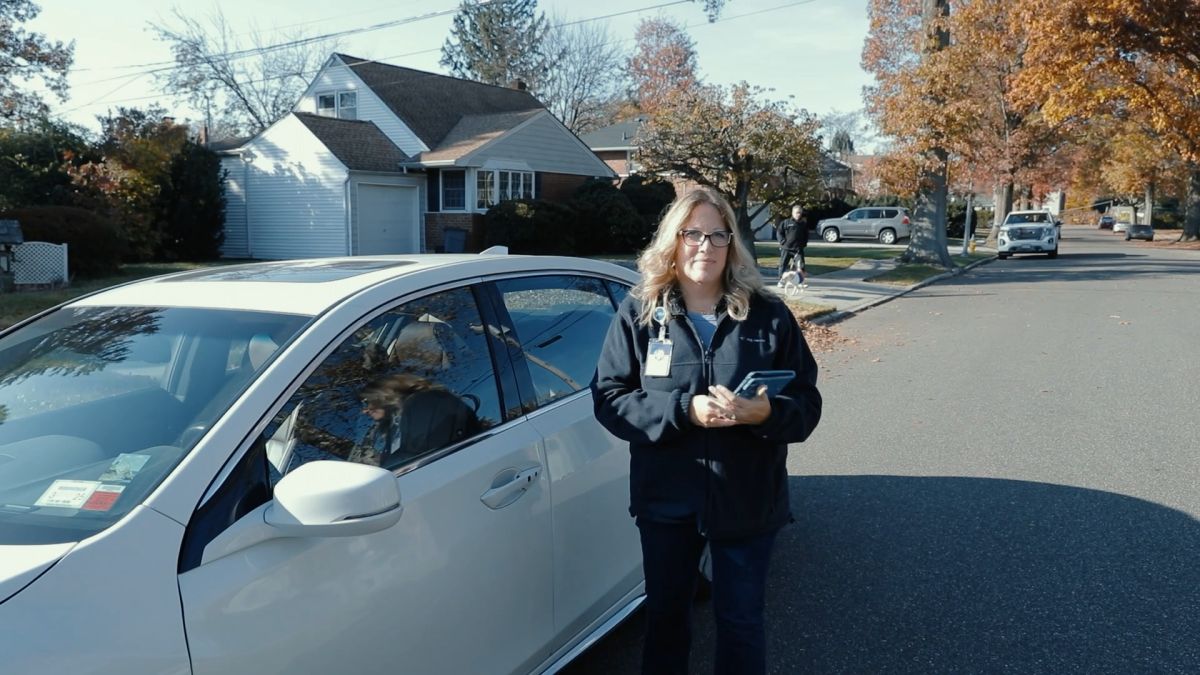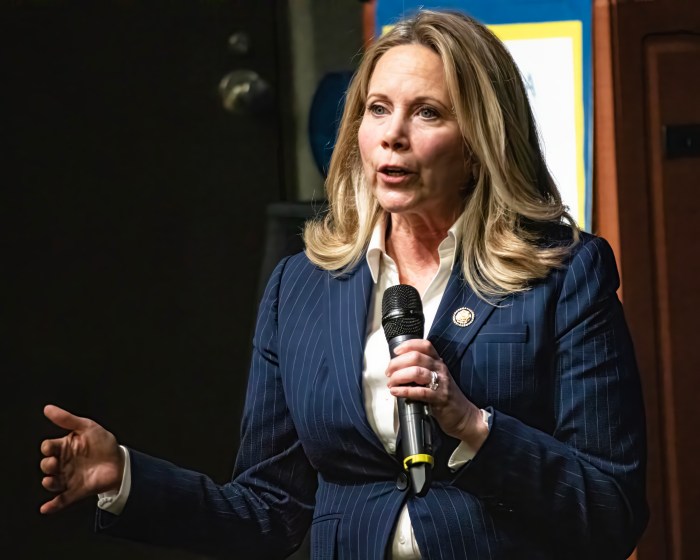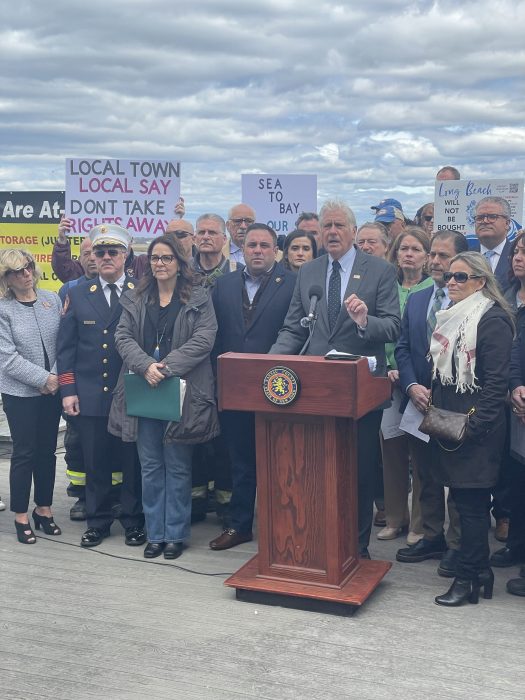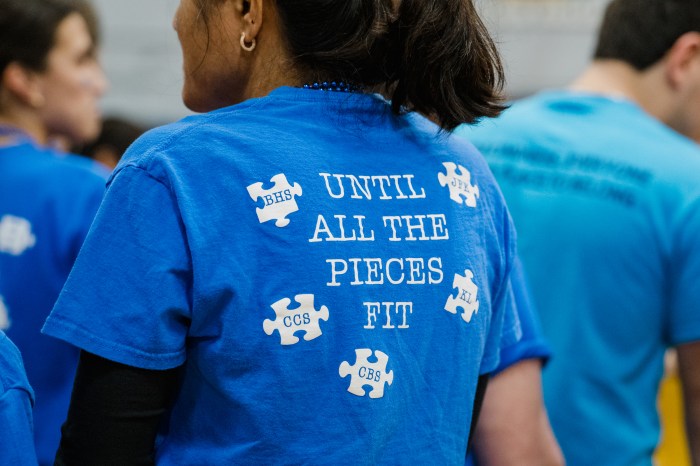Although March is dedicated to recognizing social workers, the dedicated professionals who serve communities nationwide, every day is an opportunity to thank social workers for the critical work they do year-round.
“Social workers are on the frontlines every day,” Dolly Garcia-Willix, a senior social worker with VNS Health explains, “and while Social Work Month brings us into the spotlight once a year, the work we do is ongoing.”
Based on Long Island, Garcia-Willix serves a vital role in the lives of elderly individuals, many of whom are facing complex challenges. With Long Island’s senior population steadily increasing, the need for social workers like Garcia-Willix is more pressing than ever. These professionals connect older adults with the resources they need to live independently and safely.
“As people age, the barriers they face only grow,” she says. “My job is to make sure that the right services are in place so that these individuals can continue to live with dignity and comfort.”
A Growing Need
Long Island’s aging population is rapidly increasing, making Garcia-Willix’s role as a social worker more crucial than ever. She helps elderly individuals access essential services, from arranging transportation for medical appointments to securing nutritious meals and providing respite care for overwhelmed caregivers.
“The number of seniors living on Long Island is growing and they often face unique challenges,” she explains. “My job isn’t just about making sure they have what they need now—it’s about planning for their future, to ensure they’re not only surviving, but thriving.”
Garcia-Willix works tirelessly to build trust with each of her patients.
“When I meet a new patient, I need to make them feel comfortable before I can do anything else,” she says. “Many seniors may have only interacted with hospital discharge planners, who are in and out quickly. But I’m there for the long haul.”
Her day-to-day work involves assessing each patient’s situation—identifying their needs, but also finding out what matters most to them personally.
“A social worker needs to be more than just a resource broker,” she reflects. “We have to listen, to understand the emotional and psychological toll these challenges can take. That’s what helps me provide the best care possible.”
Caring for the Whole Family
In her role, Garcia-Willix isn’t just focused on the elderly individual; she also considers the needs of their family.
“A caregiver’s role is incredibly demanding,” she explains. “It’s not just about taking care of the patient; it’s about taking care of the caregiver too.” Many caregivers, particularly family members, find themselves balancing the demands of their loved one’s care with their own personal and professional lives.
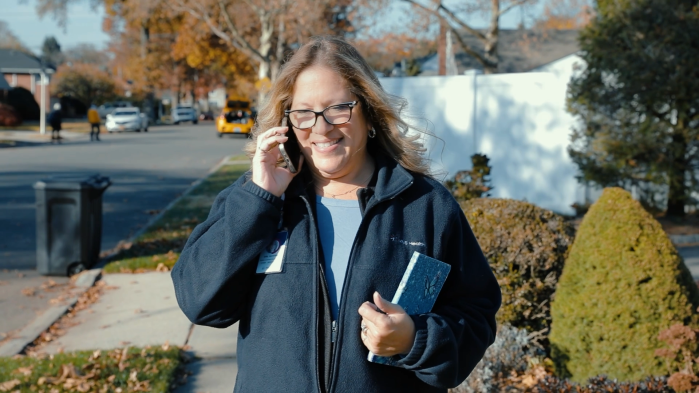
One of Garcia-Willix’s key roles is to educate caregivers about self-care.
“I often remind them to find a balance,” she says. “If they’re not well, they won’t be able to care for their loved one effectively.” She goes on to say, “Sometimes that means finding local resources or respite programs that give caregivers a break—because they need to recharge.”
Garcia-Willix often sees patients who are dealing with cognitive impairments, such as Alzheimer’s or dementia, which require special care and understanding. “I’m seeing a lot of cases right now where families are struggling to adjust to a loved one’s cognitive decline,” she shares. “It’s incredibly stressful for everyone involved.”
A Desire to Stay at Home
As she works with older adults across Long Island, Garcia-Willix has witnessed a growing trend: seniors want to remain in their homes for as long as possible. “Since COVID, people are even more reluctant to leave their homes and enter institutional care,” she notes. “Home is where they feel safest, where their memories are and where their support systems are often rooted.”
For many seniors, staying at home isn’t just a preference; it’s a necessity. The familiar environment helps reduce the anxiety and disorientation that can come with moving into a facility.
“When people feel comfortable in their surroundings, their physical and mental health improves,” Garcia-Willix explains. “It’s all about allowing them to age in place, with the right support systems in place to help them stay independent.”
Yet, despite the growing demand for home-based care, Garcia-Willix points out that the system isn’t always equipped to meet these needs.
“There’s a shortage of community resources,” she says. “Volunteers are harder to find and funding for programs has decreased. This makes it even harder to provide comprehensive support for seniors who want to stay at home.”
The Challenge of Limited Resources
One of the biggest challenges that Garcia-Willix faces is the lack of tangible community resources.
“The gap between what seniors need and what’s available to them is widening,” she says. “Take something as simple as snow removal. Many of the elderly people I work with can’t shovel their own driveways and the lack of services like that can be a major safety concern.”
She adds that community programs that once flourished are now underfunded or nonexistent.
“Before COVID, we had more volunteer-driven services,” she notes. “But now, those resources have diminished. It’s hard to find that one volunteer who can help an older adult with a small but crucial task, like picking up groceries or bringing in the mail.”
This lack of support underscores the importance of social workers who can step in and advocate for their patients.
“Without social workers,” Garcia-Willix says, “seniors would often fall through the cracks. We’re there to fill the gaps and make sure that individuals have access to the resources they need to thrive.”
A Lifelong Dedication to Helping Others
With more than 30 years in the field, Garcia-Willix has no plans of slowing down.
“I’m never bored in this job,” she says with a smile. “Every day is different and there’s always a new challenge.” Her dedication to her work is evident in every interaction and she takes pride in making a real difference in her patients’ lives.
One of her most memorable experiences came when she visited a couple in their 90s, who were still living independently in their home.
“The wife told me, ‘It’s nice to be important, but it’s important to be nice. It doesn’t cost anything,’” Garcia-Willix recalls, laughing. “That simple statement stuck with me because it encapsulates the essence of what we do as social workers: we’re here to help, to listen and to make life just a little bit easier for others.”
The work of social workers like Dolly Garcia-Willix doesn’t end when the calendar flips. Every day is a reason to thank them for the impact they make on the lives of vulnerable populations, particularly the elderly.
“The work we do is about building connections and ensuring people get the care they need,” she says. “It’s not just a job—it’s a commitment to making the world a better place for those who need it most.”




